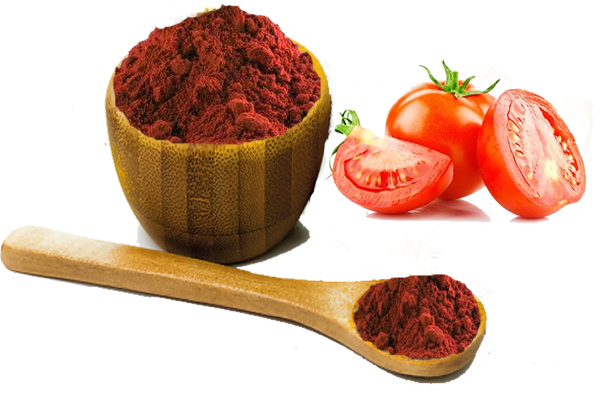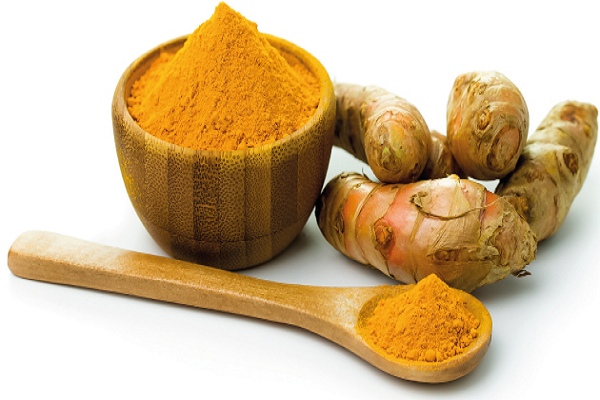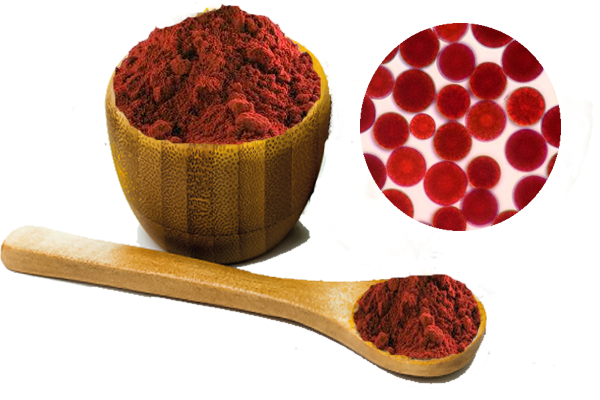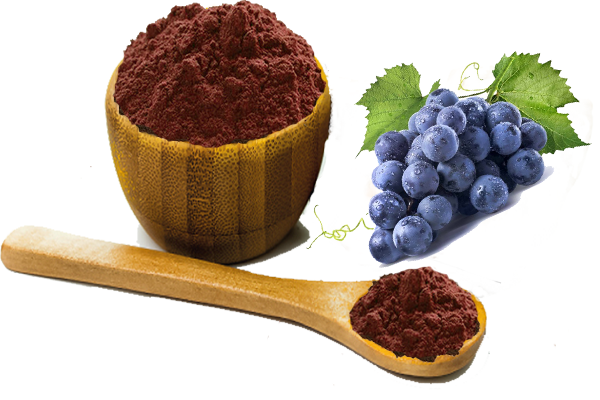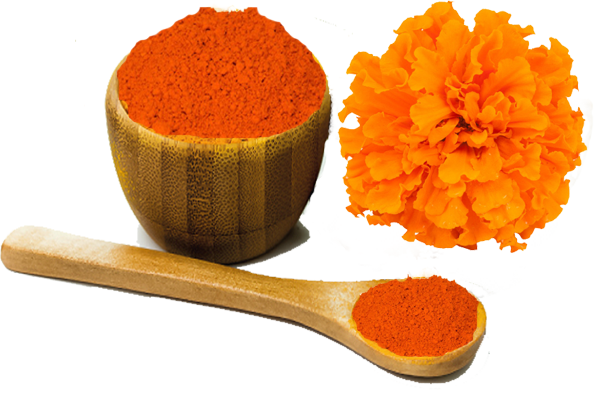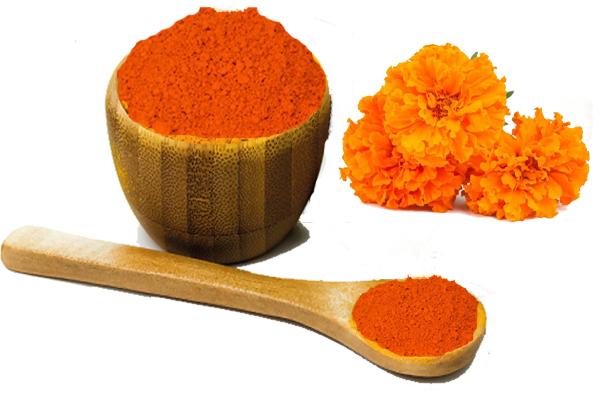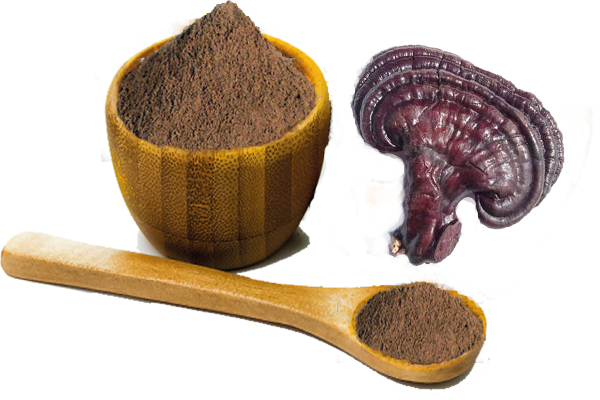
Tomato Extract Lycopene
MIGU supplied tomato extract lycopene 10% 20% and other standard purity and OEM service with analysis meets the EP, USP, JP, CP.....
Tomato extract lycopene 5% 10% 20% by HPLC offered by MIGU a 15 years experienced cGMP manufacturer
with warehosues in NJ & CA, USA.
Latin Name: Solanum lycopersicum
Material Original: Solanum lycopersicum
Extracted Part: Fruit
Supported Purity: tomato extract lycopene 5%,10%,20%
What is the Tomato
The tomato (see pronunciation) is the edible, often red berry-type fruit of Solanum lycopersicum,commonly known as a tomato plant, which belongs to the nightshade family, Solanaceae.The species originated in Centraland South America. The Nahuatl (Aztec language) word tomatl gave rise to the Spanish word “tomate”,where the English word tomato comes from. Its many varieties are widely grown, sometimes in greenhouses in cooler climates. The plants typically grow to 1–3 meters (3–10 ft) in height and have a weak stem that often sprawls over the ground and vines over other plants. It is a perennialin its native habitat, and grown as an annual in temperate climates. An average common tomato weighs approximately 100 grams (4 oz). Its use as a food originated in Mexico, and spread throughout the world following the Spanish colonization of the Americas. The tomato is consumed in diverse ways, including raw, as an ingredient in many dishes, sauces, salads, and drinks. While tomatoes are botanically and scientifically the berry-type fruits of the tomato plant, they can also be considered a culinary vegetable, causing some confusion.

tomato extract lycopene.jpg
How does the tomato extract lycopene Actions in pharmacological
In tomato, it contains Malic acid, citric acid, adenine, choline fenugreek alkali, tomato base.The most important
and active ingrediants after extracting are lycopene. Which is a bright red carotene and carotenoid pigment
and phytochemical .Although tamota extract lycopene is chemically a carotene, it has no Vitamin A activity.
Tomato extract lycopene is an important member of the carotenoid family, can effectively restrain and reduce
incidence rate of the prostate cancer, ovarian cancer, pancreatic cancer, bladder cancer and digestive tract
cancer, its founctional efficacy stronger than alpha carotene and beta carotene. In 1989, the study found that
the tomato extract is all carotenoids (including beta-carotene) in the most effective single oxygen quenching
agent. Tamota extract Lycopene oxidation resistance is very strong, is 100 times that of vitamin E, and beta-carotene, more
than 2 times.
The Function of tomato extract lycopene
A: Antioxidant Activity
Oxidative stress is recognized as one of the major contributors to the increased risk of cardiovascular disease
and cancer. Among the common carotenoids lycopene stands as the most potent antioxidant as demonstrated
by in vitro experimental systems.1 Based on this study the antioxidant potency of carotenoids can be ranked
as follows: lycopene > [is greater than] alpha-tocopherol > alpha-carotene > beta-cryptoxanthin > zeaxanthin
> beta-carotene > lutein. Mixtures of carotenoids were more effective than the single compounds.19 This
synergistic effect was most pronounced when lycopene or lutein was present. The superior protection of mixtures
may be related to the specific positioning of different carotenoids in cell membranes.
Several studies of tomato consumption demonstrate the antioxidant properties in humans. For example, recently
it was found that daily consumption of a tomato product containing 15 mg lycopene plus other tomato
phytonutrients significantly enhanced the protection of lipoproteins from ex vivo oxidative stress.43These results
indicate that lycopene absorbed from tomato products may act as an in vivo antioxidant.
- Inhibition of cancer cell proliferation (cell cycle)
Lycopene has been found to inhibit proliferation of several types of cancer cells, including those of breast, prostate,
lung, and endometrium. The inhibitory effects of lycopene on mammary and prostate cancer cell growth were not
accompanied by apoptotic (programmed) or necrotic (resulting from injury or disease) cell death, a mechanism
related to the action of some drugs but not to micronutrients frequently consumed in the human diet. This effect
was accompanied by inhibition of cell cycle progression from the G0/G1 to the S phase as measured by flow
cytometry.3 The inhibition of cell proliferation correlated with a decrease in cyclin D1 protein levels which is a key
regulator of this process. It is well documented that growth factors affect the cell cycle apparatus (primarily during
G1 phase) and that the main components acting as growth factor sensors are the D-type cyclins.44 Moreover,
cyclin D1 is known to act as an oncogene (a gene whose dysregulation causes normal cells to become cancerous)
and is found to be over-expressed in many breast cancer cell lines as well as in primary tumors.45 Thus, the
decrease in cellular cyclin D1 level by tamota extract lycopene provides a mechanistic explanation for the anticancer activity of
the carotenoid.
- Interference with growth factors stimulation of cancer cell proliferation
The growth stimulation of mammary cancer cells by insulin-like growth factor 1 (IGF-1) was markedly reduced by
physiological concentrations of tamota extract lycopene in experimental in vitro studies.2, 46 The significance of this finding for
cancer prevention is related to independent epidemiological findings that elevated IGF-1 levels increase lifetime
risks of breast and prostate cancer.47, 48 If lycopene interference with IGF-1 stimulation of tumor cell growth is
confirmed in clinical studies, this would provide a strong rationale for recommending increased intake of tamota extract lycopene,
particularly via tomato-based food products, for cancer prevention.
- Cancer prevention by inducing phase II enzymes
Induction of phase II enzymes, which conjugate reactive electrophiles (chemicals that are attracted to electrons or
tend to accept electrons from other chemicals) and act as indirect antioxidants, appears to be an effective means
for achieving protection against a variety of carcinogens in animals and humans. Bhuvaneswari et al.49 associated
the chemopreventive (cancer-preventive) effect of tomato extract lycopene on the incidence of DMBA-induced hamster buccal
(cheek, mouth) pouch tumors with a simultaneous rise in the level of reduced glutathione, enzymes of the
glutathione redox cycle, and glutathione S-transferase (GST) in the buccal pouch mucosa. (Note: DMBA is a
9,10-dimethylbenz-a-anthracene, a potent tumor-initiating compound.) These results suggest that the
lycopene-induced increase in the levels of GSH and the phase II enzyme GST inactivates carcinogens by forming
conjugates (chemicals formed by two or more compounds), products that are less toxic and readily excreted.
- Regulation of transcription
Transcription is the process whereby genetic information is carried from the DNA molecule via the RNA molecule
acting as a messenger. This biochemical route leads to the formation of new proteins by the process called
translation. As discussed above,tomato extract lycopene modulates the basic mechanisms of cell proliferation, growth factor
signaling, and gap junctional intercellular communication.50 Additionally, tomato extract lycopene produces changes in the
expression of many proteins participating in these processes, e.g., connexins, cyclins, and phase II enzymes.
Therefore, the question that arises is “By what mechanisms does tomato extract lycopene affect so many diverse cellular
pathways?” The changes in the expression of multiple proteins suggest that the initial effect of lycopene
involves modulation of transcription; this process is reviewed by Sharoni et al. in a recent publication.51 This
may be due to either direct interaction of the carotenoid molecules or their derivatives with transcription factors
(e.g., with ligand-activated nuclear receptors52) or indirect modification of transcriptional activity (e.g., via
changes in status of cellular redox, which affects redox-sensitive transcription systems53).
Safety of tomato extract lycopene
The safety issue for carotenoids attracted much attention after the publication of the beta-carotene
supplementation trials, which yielded negative results. It is interesting that in those studies an increased
risk for lung cancer was related to a 12- and 16-fold increase in beta-carotene plasma levels due to
supplementation (the CARET and ATBC studies, respectively).54 In these studies beta-carotene plasma
levels increased from 0.32 µM before supplementation up to 3.9 and 5.9 µM, respectively. (Note: One
microMolar [µM] denotes a concentration of 1 x 10-6 gram-molecular weight of solute per liter of solution.) In
a third study, which showed no effect for beta-carotene supplementation (the Physicians’ Health Study),54
only a 5-fold increase in the carotenoid serum level was achieved. Interestingly, the only study with positive
results after supplementation with beta-carotene was achieved in Linxian, a Chinese community with very low
carotenoid levels (0.11 µM) before the intervention.54 Although supplementation caused an 11-fold increase
in beta-carotene level, the final concentration of beta-carotene reached was a relatively low 1.5 mM. All these
studies used synthetic beta-carotene. Thus, keeping plasma levels of carotenoids in the upper range of
physiological level, but not higher, may be a good safety guide. Interestingly, reviewing many studies which
measured serum levels of beta-carotene and tomato extract lycopene after supplementation suggests that beta-carotene
serum levels are significantly higher than those found for tomato extract lycopene. Serum levels reached for beta-carotene
are around 3 mM and may exceed 5 mM after supplementation; on the other hand tomato extract lycopene levels above
1.2 mM are rarely seen even after long-term application. Moreover, the serum level achieved for lycopene
was not directly correlated to the amount of the supplemented carotenoid. For example, supplementation as
high as 75 mg/day did not increase tomato extract lycopene serum levels more than 1 mM.55, 56 In conclusion, by some
unknown mechanism, tomato extract lycopene plasma levels after supplementation remain relatively low, which may provide
a safety valve.
Several safety studies on formulated synthetic lycopene preparation were performed in rats and rabbits. The
results of these studies demonstrated the absence of any significant toxicological effects of the tested
materials in animals.57-59 However, the Scientific Committee on Food of the European Commission found
these synthetic preparations to be unacceptable for use as food because of their high sensitivity to oxygen
and light, which form degradation products with mutagenic activity.60 A thorough safety review by an
independent panel of toxicologists has resulted in a GRAS (generally recognized as safe) self-affirmation for
Lyc-O-Mato® (LycoRed, Beer-Sheva, Israel), a branded tomato extract that has been the subject for several
of the studies evaluating the effects of tomato products in dietary supplement form on a variety of disease
parameters.61
Concluding remarks
The scientific research to date has demonstrated an array of health benefits clearly associated with tomato
products in the diet. A look at the synergy between carotenoids has demonstrated that neither synthetic
lycopene nor tomato lycopene alone will act as a magic bullet. Effectiveness and safety are married together
in the whole tomato. Health benefits are derived from the addition of tomato products to the diet, particularly
cooked tomato products containing oil, or from supplements of tomato extract suspended in oil. The natural
tomato oil increases the bioavailability of the tomato phytonutrients. For maximum benefit, dietary supplement
customers who have opted for a nutritional approach should consider products containing a standardized
tomato extract that supplies many of the active phytonutients in tomato.More Scientific research and development , please check here
References:
- Di Mascio P, Kaiser S, Sies H. Lycopene as the most efficient biological carotenoid singlet oxygen quencher. Arch Biochem
Biophys. 1989;274(2):532-538.
2. Levy J, Bosin E, Feldman B, et al. Lycopene is a more potent inhibitor of human cancer cell proliferation than either
a-carotene or b-carotene. Nutr Cancer. 1995;24:257-267.
3. Nahum A, Hirsch K, Danilenko M, et al. Lycopene inhibition of cell cycle progression in breast and endometrial cancer
cells is associated with reduction in cyclin D levels and retention of p27(Kip1) in the cyclin E-cdk2 complexes. Oncogene.
2001;20(26):3428-3436.
4. Zhang LX, Cooney RV, Bertram JS. Carotenoids up-regulate connexin-43 gene expression independent of their
provitamin-A or antioxidant properties. Cancer Res. 1992;52(20):5707-5712.
5. Ben-Dor A, Nahum A, Danilenko M, et al. Effects of acyclo-retinoic acid and lycopene on activation of the retinoic acid
receptor and proliferation of mammary cancer cells. Arch Biochem Biophys.2001;391(1):295–302.
6. Wang XD, Liu C, Bronson RT, Smith DE, Krinsky NI, Russell M. Retinoid signaling and activator protein-1 expression
in ferrets given beta-carotene supplements and exposed to tobacco smoke. J Natl Cancer Inst.1999;91(1):60-66.
7. USDA. 1998. USDA-NCI Carotenoid Database for U.S. Foods. Nutrient Data Lab., Agric. Res. Service, U.S. Dept. of
Agriculture, Beltsville Human Nutrition Research Center, Riverdale, MD.
8. Nguyen ML, Schwartz SJ. Lycopene stability during food processing. Proc Soc Exp Biol Med. Jun 1998;218(2):101-105.
9. Hadley CW, Miller EC, Schwartz SJ, Clinton SK. Tomatoes, lycopene, and prostate cancer: progress and promise.
Exp Biol Med (Maywood). Nov 2002;227(10):869-880.
10. Mangels AR, Holden JM, Beecher GR, Forman MR, Lanza E. Carotenoid content of fruits and vegetables: an evaluation
of analytic data. J. Am. Diet Assoc. 1993;93:284-296.
11. Bohm V, Bitsch R. Intestinal absorption of lycopene from different matrices and interactions to other carotenoids, the
lipid status, and the antioxidant capacity of human plasma. Eur J Nutr. Jun 1999;38(3):118-125.
12. Fuhrman B, Ben-Yaish L, Attias J, Hayek T, Aviram M. Tomato lycopene and beta-carotene inhibit low density lipoprotein
oxidation and this effect depends on lipoprotein vitamin E content. Nutr Metab Cardiovasc Dis. 1997;7:433-443.
13. Fuhrman B, Elis A, Aviram M. Hypocholesterolemic effect of lycopene and beta-carotene is related to suppression of
cholesterol synthesis and augmentation of LDL receptor activity in macrophages. Biochem Biophys Res Commun. 1997;
233(3):658-662.
14. Khachik F, Carvalho L, Bernstein PS, Muir GJ, Zhao DY, Katz NB. Chemistry, distribution, and metabolism of tomato
carotenoids and their impact on human health. Exp Biol Med (Maywood). Nov 2002;227(10):845-851.
15. Walfisch Y, Walfisch S, Agbaria R, Levy J, Sharoni Y. Lycopene in serum, skin and adipose tissues after tomato-oleoresin
supplementation in patients undergoing haemorrhoidectomy or peri-anal fistulotomy. Br J Nutr. Oct 2003;90(4):759-766.
16. Stahl W, Sies H. Uptake of lycopene and its geometrical isomers is greater from heat-processed than from unprocessed
tomato juice in humans. J Nutr. 1992;122(11):2161-2166.
17. Amir H, Karas M, Giat J, et al. Lycopene and 1,25-dihydroxyvitamin-D3 cooperate in the inhibition of cell cycle progression
and induction of differentiation in HL-60 leukemic cells. Nutr Cancer. 1999;33:105-112.
18. Pastori M, Pfander H, Boscoboinik D, Azzi A. Lycopene in association with alpha-tocopherol inhibits at physiological
concentrations proliferation of prostate carcinoma cells. Biochem Biophys Res Commun.1998;250(3):582-585.
19. Stahl W, Junghans A, deBoer B, Driomina ES, Briviba K, Sies H. Carotenoid mixtures protect multilamellar liposomes
against oxidative damage: synergistic effects of lycopene and lutein. FEBS Lett.1998;427(2):305-308.
20. Boileau TW, Liao Z, Kim S, Lemeshow S, Erdman JW Jr, Clinton SK. Prostate carcinogenesis in N-methyl-N-nitrosourea
(NMU)-testosterone-treated rats fed tomato powder, lycopene, or energy-restricted diets. J Natl Cancer Inst. Nov 5 2003;
95(21):1578-1586.
21. Gann PH, Khachik F. Tomatoes or lycopene versus prostate cancer: is evolution anti-reductionist? J Natl Cancer Inst.
Nov 5 2003;95(21):1563-1565.
22. Giovannucci E. Tomatoes, tomato-based products, lycopene, and cancer: review of the epidemiologic literature. J Natl
Cancer Inst. 1999;91:317-331.
23. Etminan M, Takkouche B, Caamano-Isorna F. The role of tomato products and lycopene in the prevention of prostate
cancer: a meta-analysis of observational studies. Cancer Epidemiol Biomarkers Prev. Mar 2004;13(3):340-345.
24. Giovannucci E, Ascherio A, Rimm EB, Stampfer MJ, Colditz GA, Willett WC. Intake of carotenoids and retinol in relation
to risk of prostate cancer. J Natl Canc Inst. 1995;87:1767-1776.
25. Freeman VL, Meydani M, Yong S, et al. Prostatic levels of tocopherols, carotenoids, and retinol in relation to plasma
levels and self-reported usual dietary intake. Am J Epidemiol. Jan 15 2000;151(2):109-118.

